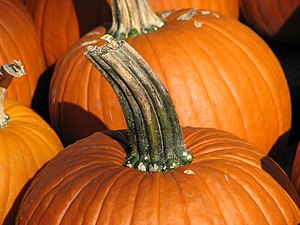 Image via Wikipedia
Image via WikipediaIngredients
- whole wheat sourdough bread, cubed -- 1 pound
- Water -- 3 quarts
- a red apple
- Raisins -- 2 tablespoons
Method
- Bring the 3 quarts of water to a boil in a large pot. Remove from heat and immediately stir in the bread. Cover with a clean towel and let rest in a dark, cool place for 8 to 10 hours.
- Pour the liquid through a fine-meshed sieve or strainer, gently pressing one the bread to get the liquid out. Don't press too hard, or your kvas will turn cloudy.
- Pour into a 1-gallon pitcher or container. Add the raisins and pieces of apple and cover tightly with plastic wrap and a rubber band. Set in a dark, cool place for 4 or 5 days , it should bubble a bit.
- Carefully pour off the clear liquid into a clean container or individual bottles. Chill well before serving.
Variations
- Add 2 tablespoons of fresh mint leaves with the raisins
- Some recipes substitute berry juice for 2 to 3 cups of the water, giving it a refreshing, fruity flavor.
- Kvas is often served unfiltered, with the yeast sediment. This gives it a richer flavor and boosts its vitamin content.
- The final fermentation can also take place in stoppered bottles if you like. In step five, pour the strained liquid into individual beer bottles. Add one or two raisins to each bottle and rest for 4 or 5 days. Move to a refrigerator and store chilled until consumed. CAUTION: the bottles have an alarming habit of popping open from pressure during the fermentation. So it's best if you know what you're doing.






